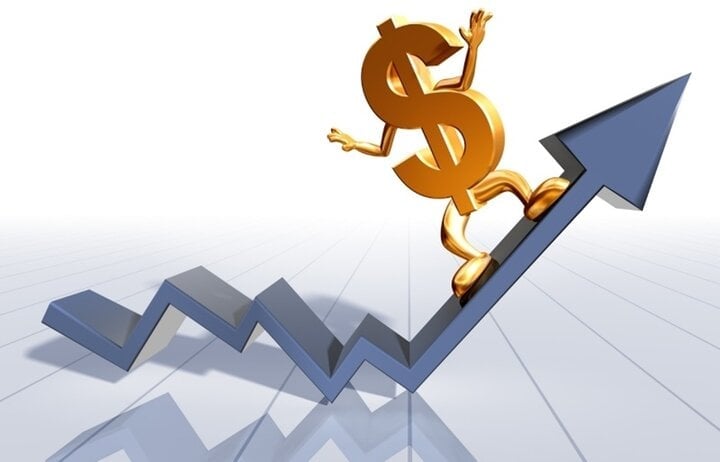The discount rate is used to calculate the present value of a future sum of money.
Imagine that a customer receives a sum of money in the future, but wants to know the value of that money at the present time. In this case, a discount rate is used to calculate the present value of that money.
The discount rate is calculated based on risk, market, and other economic factors. Discount rates are used in areas such as asset valuation, risk management, investment, and financial planning.

(Illustration)
Formula for calculating discount rate
There are two ways to calculate the discount rate: based on the cost of capital and using the weighted average of the cost of capital.
Cost of capital
To calculate the discount rate according to the capital mobilization method, the following formula can be applied:
Discount rate = Profit earned/Amount invested to raise capital
In there:
- Return on investment is the total value of cash flows received from investment, including both revenue and profit.
- Amount invested to raise capital: is the total amount spent to invest.
When calculating the discount rate, it is necessary to pay attention to the time unit and adjust it to match the time unit of the investment project such as day, month, year.
Weighted average cost of capital
The formula for calculating the discount rate using the weighted average cost of capital method is as follows:
Discount rate = (CPCV1 x LSCV1 + CPCV2 x LSCV2 + ... + CPCVn x LSCVn) / (LSCV1 + LSCV2 + ... + LSCVn)
In there:
CPCV: Cost of capital for each source of capital (i.e. the interest rate or fee paid for that source of capital)
LSCV: Amount of capital mobilized from each source of capital.
This formula calculates the weighted average of the funding costs associated with each source of capital, in order to derive the overall discount rate for the investment project.
Impact of discount rate on banks
With commercial banks
Discount interest rate is an important factor in the operation of commercial banks. Because, discount interest rate affects the cost of capital mobilization and the profit rate of the bank.
If the discount rate increases, the cost of raising capital will increase, affecting the bank's profits.
With state bank
The discount rate is an important tool in the monetary policy of the State Bank. The State Bank uses the discount rate to control inflation and stabilize prices.
When the discount rate increases, the cost of capital mobilization of credit institutions increases, leading to a decrease in the lending capacity of credit institutions, affecting the business activities of banks. The State Bank also uses the discount rate to adjust the foreign currency reduction rate and at the same time increase the value of domestic currency.
Source



![[Photo] Binh Thuan organizes many special festivals on the occasion of April 30 and May 1](https://vphoto.vietnam.vn/thumb/1200x675/vietnam/resource/IMAGE/2025/5/1/5180af1d979642468ef6a3a9755d8d51)


![[Photo] Ha Giang: Many key projects under construction during the holiday season](https://vphoto.vietnam.vn/thumb/1200x675/vietnam/resource/IMAGE/2025/5/1/8b8d87a9bd9b4d279bf5c1f71c030dec)

























![[Photo] Feast your eyes on images of parades and marching groups seen from above](https://vphoto.vietnam.vn/thumb/1200x675/vietnam/resource/IMAGE/2025/4/30/3525302266124e69819126aa93c41092)





































































Comment (0)